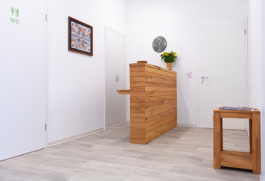Providing education, exercise and strategies to increase mobility, gain strength and prevent the recurrence of pain.
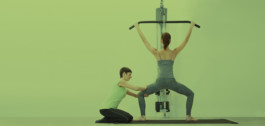
Services
I accept all privately and publicly insured patients, as well as self-paying clients. My qualifications allow me to diagnose and decide on the duration, interval and quantity of treatments.
Recovery requires a journey of patience, persistence, courage and good coaching utilising a combination of the following techniques:

MANUAL THERAPY
Manual therapy examines and treats disorders of the musculoskeletal system. Blocked or restricted joints are mobilised to regain movement. Specific soft tissue techniques may also be used to improve the mobility and function of tissue and muscles. The goal is to re-establish the interaction between joints, muscles and nerves.

3D SCOLIOSIS THERAPY BY SCHROTH
Scoliosis is a shift in the shape of the trunk and thus, curvature of the spine, which runs in three dimensions. The essential component of the 3D-scoliosis therapy by Schroth is the rotational-angle breathing. This serves to correct the scoliotic respiratory pattern. The lateral bending and malalignment of the spine can also be corrected
THERMOTHERAPY
The use of heat and cool packs reduces swelling and pain, improves blood circulation and relaxes the musculature.
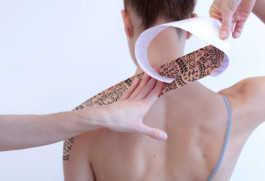
TAPING
The kinesiotaping and dynamic taping method is a rehabilitative taping technique designed to facilitate the body's natural healing process while providing support and stability to muscles and joints.
PHYSIOTHERAPY
Physiotherapy helps repair damage, reduce stiffness and pain, increases mobility and improves quality of life. Physiotherapy extends beyond health promotion to injury prevention, acute care, rehabilitation, maintenance of functional mobility, chronic disease management, patient education and occupational health.
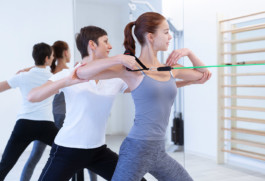
MANUAL LYMPH DRAINAGE
In the treatment of lymphedema, the manual lymph drainage is designed to manipulate lymphatic organs and then re-route the flow of stagnated lymphatic fluid around blocked areas.
CLASSICAL MASSAGE
Massage therapy is the manipulation of tissue and muscle. The benefits of a massage include reducing pain, stimulating the immune system, relieve anxiety, lower blood pressure, loosen tight muscles and combat depression.
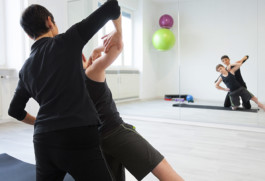
FLEXIBILITY TRAINING
Flexibility is determined not only by muscles, but by many structures in your body such as nerves and fascia. Other factors such as stress and diet can also contribute to your overall mobility. Flexibility training involves assessing exactly where the restriction is, why it is happening and creating a specific program for home which may include muscle stretches, massage techniques, fascial mobilisers and neural releases as well as strength training to help increase control in your new range.
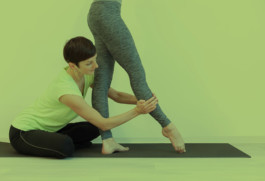
Dance Physiotherapy
Nothing is
more revealing
than movement.
Martha Graham
This service is designed for professional dancers and students of dance, with the goal of providing the highest quality of healthcare to educate and empower the dancer conducive to an environment that mitigates injury and time loss. As a former professional ballet dancer and experienced practitioner, I am familiar with the biomechanics of dance movements and the demands on a dancer’s body. Every body is unique and helping a dancer master the one with which they have been blessed, takes time and effort.
Typical dance injuries
• Hip Injuries
cracking, snapping, labral tears, anterior impingement, bursitis
• Knee Injuries
meniscus injuries, Baker's cyst, osteochondritis dissencans, patellar luxation, tendonitis
• Foot Injuries
Inversion trauma, achillodynia, blisters, hallux valgus, stress fractures, FHL-tendopathy
Dance Assessment of basic Classical Technique
• First & Fifth Position
• Plié
• Pointe Range & Demi Pointe
• Allegro
• Arabesque
• Tendu
• Flexibility
• Turnout and the Dancer’s Hip
• Core Stability
• Spinal Mobility
*The methods used are closely aligned with those of the Medical Team of „The Australian Ballet Company“, the „International Association of Dance Medicine and Science (IADMS)“ and Lisa Howell, creator of „The Ballet Blog“ and „Perfect Form Physiotherapy“ in Sydney.
About Me
The human body was designed to move. Movement is a medicine for creating change in a person's physical, emotional and mental states.
Born and raised in Perth, Western Australia, I came to Europe as a young, professional ballet dancer. For thirteen years I danced at various opera houses in Germany - and finally at the Staatstheater Nuremberg.
Whilst my years as a ballet dancer were fulfilling, they were demanding and not always injury free. Having ended my dance career in 2010, I then made the decision to become a physiotherapist. The combination of these two adult life chapters has given me special insight with respect to pain and injury.
In addition to my work as a physiotherapist, I teach anatomy at a vocational school for dance in Nuremberg. In my free time, I volunteer for the Bavarian para-swimming team as a "national classifier“. Both activities are very rewarding!
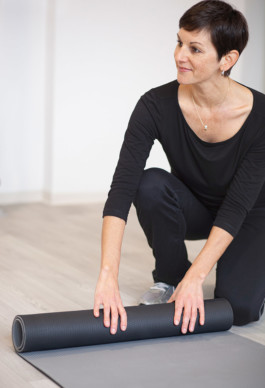

Contact
Opening Hours:
Mon: 8.00am-3.00pm
Tue - Thurs: 11.30am-18.30pm
Fri: 10.00am-2.00pm
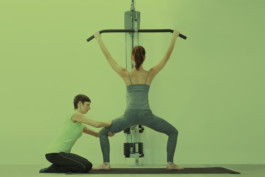
Providing education, exercise and strategies to increase mobility, gain strength and prevent the recurrence of pain.
Services
Recovery requires a journey of patience, persistence, courage and good coaching utilising a combination of the following techniques:

MANUAL THERAPY
Manual therapy examines and treats disorders of the musculoskeletal system. Blocked or restricted joints are mobilised to regain movement. Specific soft tissue techniques may also be used to improve the mobility and function of tissue and muscles. The goal is to re-establish the interaction between joints, muscles and nerves.

3D ScOLIOSIS THERAPY BY SCHROTH
Scoliosis is a shift in the shape of the trunk and thus, curvature of the spine, which runs in three dimensions. The essential component of the 3D-scoliosis therapy by Schroth is the rotational-angle breathing. This serves to correct the scoliotic respiratory pattern. The lateral bending and malalignment of the spine can also be corrected.

PHYSIOTHERAPY
Physiotherapy helps repair damage, reduce stiffness and pain, increases mobility and improves quality of life. Physiotherapy extends beyond health promotion to injury prevention, acute care, rehabilitation, maintenance of functional mobility, chronic disease management, patient education and occupational health.
MANUAL LYMPH DRAINAGE
In the treatment of lymphedema, the manual lymph drainage is designed to manipulate lymphatic organs and then re-route the flow of stagnated lymphatic fluid around blocked areas.
CLASSICAL MASSAGE
Massage therapy is the manipulation of tissue and muscle. The benefits of a massage include reducing pain, stimulating the immune system, relieve anxiety, lower blood pressure, loosen tight muscles and combat depression.

FLEXIBILITY TRAINING
Flexibility is determined not only by muscles, but by many structures in your body such as nerves and fascia. Other factors such as stress and diet can also contribute to your overall mobility. Flexibility training involves assessing exactly where the restriction is, why it is happening and creating a specific program for home which may include muscle stretches, massage techniques, fascial mobilisers and neural releases as well as strength training to help increase control in your new range.
THERMOTHERAPY
The use of heat and cool packs reduces swelling and pain, improves blood circulation and relaxes the musculature.

TAPING
The kinesiotaping and dynamic taping method is a rehabilitative taping technique designed to facilitate the body's natural healing process while providing support and stability to muscles and joints.
Dance Physiotherapy

Nothing is
more revealing
than movement.
Martha Graham
This service is designed for professional dancers and students of dance, with the goal of providing the highest quality of healthcare to educate and empower the dancer conducive to an environment that mitigates injury and time loss. As a former professional ballet dancer and experienced practitioner, I am familiar with the biomechanics of dance movements and the demands on a dancer’s body. Every body is unique and helping a dancer master the one with which they have been blessed, takes time and effort.
Typical Dance Injuries
• Hip Injuries
cracking, snapping, labral tears, anterior impingement, bursitis
• Knee Injuries
meniscus injuries, Baker's cyst, osteochondritis dissencans, patellar luxation, tendonitis
• Foot Injuries
Inversion trauma, achillodynia, blisters, hallux valgus, stress fractures, FHL-tendopathy
Dance Assessment of basic Classical Technique
• First & Fifth Position
• Plié
• Pointe Range & Demi Pointe
• Allegro
• Arabesque
• Tendu
• Flexibility
• Turnout and the Dancer’s Hip
• Core Stability
• Spinal Mobility
*The methods used are closely aligned with those of the Medical Team of „The Australian Ballet Company“, the „International Association of Dance Medicine and Science (IADMS)“ and Lisa Howell, creator of „The Ballet Blog“ and „Perfect Form Physiotherapy“ in Sydney.
About me
The human body was designed to move. Movement is a medicine for creating change in a person's physical, emotional and mental states.

Born and raised in Perth, Western Australia, I came to Europe as a young, professional ballet dancer. For thirteen years I danced at various opera houses in Germany - and finally at the Staatstheater Nuremberg.
Whilst my years as a ballet dancer were fulfilling, they were demanding and not always injury free. Having ended my dance career in 2010, I then made the decision to become a physiotherapist. The combination of these two adult life chapters has given me special insight with respect to pain and injury.
In addition to my work as a physiotherapist, I teach anatomy at a vocational school for dance in Nuremberg. In my free time, I volunteer for the Bavarian para-swimming team as a "national classifier“. Both activities are very rewarding!
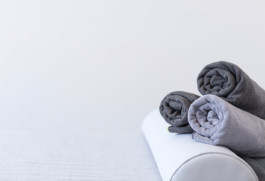
Contact
Phone
0911 664 349 50
Fax
0911 664 349 51
E-Mail
physio@denise-churchward.de
Address
Georg-Strobel-Str. 68,
90489 Nürnberg
Opening Hours
Mon: 8.00am-3.00pm
Tue - Thurs: 11.30am-6.30pm
Fri: 10.00am-2.00pm
